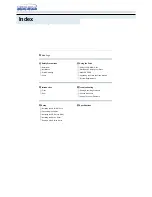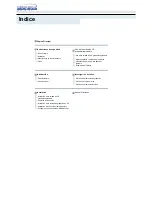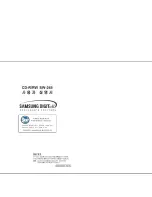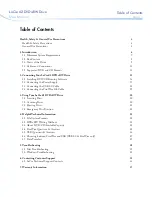
478
SELECTION
4) Advanced magnetic flux vector control
The output current of the inverter is divided into an
excitation current and a torque current by vector
operation, then the voltage drop causing torque
decrease is compensated for and the speed is
automatically compensated (slip compensation) to
the optimum so that the speed will not change.
The output current of the inverter is divided into an
excitation current and a torque current by vector
operation and the frequency and voltage are
compensated for to flow a motor current which
meets a load torque, thereby improving a low
speed torque and speed accuracy. This method
provides a high (150%) torque at 0.5Hz.
The actual motor speed is estimated from the
torque current and the output frequency is
compensated for (increased/decreased) to
achieve the preset speed. (slip compensation)
When the motor current varies due to load
fluctuation, the voltage drop of the motor's primary
side (including the wiring) also changes, affecting
the magnitude of the excitation current.
This voltage drop is found from the motor and
primary wiring constants of the motor and torque
current magnitude, and the output voltage of the
inverter is compensated for (increased/
decreased) to keep the primary magnetic flux of
the motor constant.
Also, when the online auto tuning is selected in
, the motor is tuned quickly when starting,
allowing high-accuracy operation unaffected by
motor temperatures and high-torque, stable
operation down to an ultra-low speed.
The motor temperature-speed fluctuation
characteristic example is shown below.
Motor temperature-speed fluctuation characteristic
example
(when the motor SF-JR 4P 3.7kW is used)
(Online auto tuning selected, repeated operation at
90% duty)
Speed-torque characteristic example for Advanced magnetic flux vector control
(online auto tuning selected, inverter used with 3.7kW 4-pole motor)
The output current (motor
current) of the inverter is
divided into an excitation
current (current required to
generate a magnetic flux)
and a torque current
(current proportional to load
torque) by vector operation
according to each phase of
the current relative to the
output voltage. (Refer to the
figure on the right)
A700
E700
Motor
current
Excitation current
Torque
current
A700
0
10
20
30
40
50
60
70
0
40
80
160
120
20
60
100
140
240
260
280
320
300
250
270
290
310
Spe
ed [r/min
]
Speed: with tuning
Speed: without tuning
Motor temperature
Elapsed time [min.]
200
100
0
-100
-200
T
orque (%)
200
400
600
800
1000
1200
1400
1600
1800
2000
30Hz
60Hz
6Hz
200
100
0
50 100
200
150
Speed (r/min)
-100
-200
T
orque (%)
Speed (r/min)
Expanded
Содержание FR-A700 Series
Страница 245: ...279 2 PARAMETER PARAMETER MEMO ...
Страница 440: ...474 PARAMETER MEMO ...
Страница 522: ...556 SELECTION MEMO ...
















































